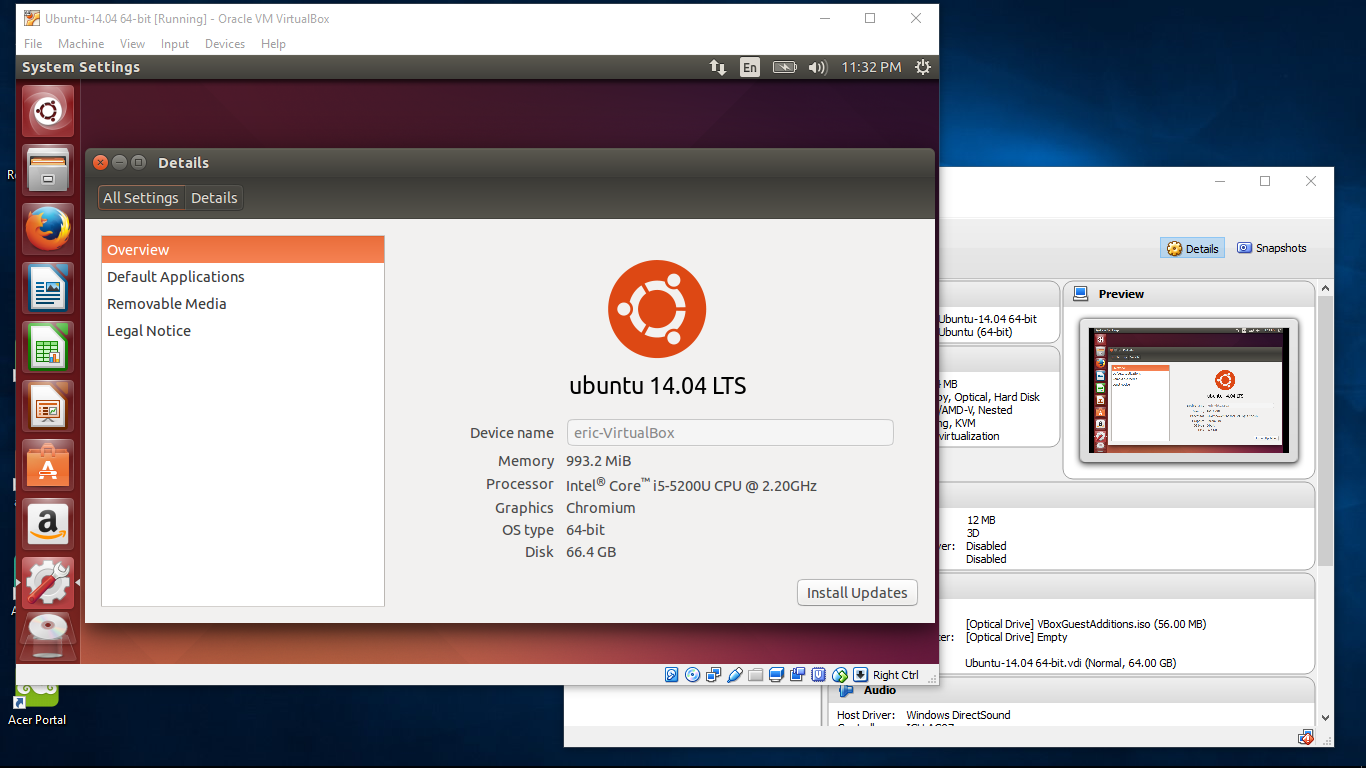Installer Linux Ubuntu
Note Make sure to specify a strong password for the SA account (Minimum length 8 characters, including uppercase and lowercase letters, base 10 digits and/or non-alphanumeric symbols). • Once the configuration is done, verify that the service is running: systemctl status mssql-server • If you plan to connect remotely, you might also need to open the SQL Server TCP port (default 1433) on your firewall. At this point, SQL Server is running on your Ubuntu machine and is ready to use! Install the SQL Server command-line tools To create a database, you need to connect with a tool that can run Transact-SQL statements on the SQL Server. The following steps install the SQL Server command-line tools: and. • Import the public repository GPG keys: curl sudo apt-key add - • Register the Microsoft Ubuntu repository: sudo add-apt-repository '$(curl • Update the sources list and run the installation command with the unixODBC developer package: sudo apt-get update sudo apt-get install -y mssql-tools unixodbc-dev • For convenience, add /opt/mssql-tools/bin/ to your PATH environment variable. This enables you to run the tools without specifying the full path.
In order to build ParaView, we need to build CMake 3.2.1, which is the default version used by the scripts in OpenFOAM 4. Download Cwm Samsung Galaxy Pocket S5300. 1, therefore the following steps will download, unpack and build our custom CMake: cd $WM_THIRD_PARTY_DIR./makeCmake >log.makeCM 2>&1 wmRefresh; Now let's build the. Get Docker CE for Ubuntu Estimated. This example uses the script at get.docker.com to install the latest release of Docker CE on Linux. To install the latest. How To Install Linux, Apache. 1-4 in the initial server setup for Ubuntu 16.04. Step 1: Install Apache and. Infrastructure With DigitalOcean Cloud. When it comes to installing popular Linux flavour Ubuntu, there are so many useful snippets of information on blogs and guides all over the internet. If you Google “How to install Ubuntu”, you'll see what I mean. Here's how to install Ubuntu: How To Install Ubuntu Summary. Download Ubuntu; Check if Your Computer will.


Run the following commands to modify the PATH for both login sessions and interactive/non-login sessions: echo 'export PATH='$PATH:/opt/mssql-tools/bin' >>~/.bash_profile echo 'export PATH='$PATH:/opt/mssql-tools/bin' >>~/.bashrc source ~/.bashrc. Tip Sqlcmd is just one tool for connecting to SQL Server to run queries and perform management and development tasks. Other tools include: • • •. • Connect locally The following steps use sqlcmd to locally connect to your new SQL Server instance. • Run sqlcmd with parameters for your SQL Server name (-S), the user name (-U), and the password (-P). In this tutorial, you are connecting locally, so the server name is localhost.
Power Predictor - Wind And Solar Energy Measurement Tool. The user name is SA and the password is the one you provided for the SA account during setup. Sqlcmd -S localhost -U SA -P '. Tip If you later decide to connect remotely, specify the machine name or IP address for the -S parameter, and make sure port 1433 is open on your firewall. • If successful, you should get to a sqlcmd command prompt: 1. • If you get a connection failure, first attempt to diagnose the problem from the error message.
Then review the. Create and query data The following sections walk you through using sqlcmd to create a new database, add data, and run a simple query. Create a new database The following steps create a new database named TestDB. • From the sqlcmd command prompt, paste the following Transact-SQL command to create a test database: CREATE DATABASE TestDB • On the next line, write a query to return the name of all of the databases on your server: SELECT Name from sys.Databases • The previous two commands were not executed immediately.
You must type GO on a new line to execute the previous commands: GO Insert data Next create a new table, Inventory, and insert two new rows. • From the sqlcmd command prompt, switch context to the new TestDB database: USE TestDB • Create new table named Inventory: CREATE TABLE Inventory (id INT, name NVARCHAR(50), quantity INT) • Insert data into the new table: INSERT INTO Inventory VALUES (1, 'banana', 150); INSERT INTO Inventory VALUES (2, 'orange', 154); • Type GO to execute the previous commands: GO Select data Now, run a query to return data from the Inventory table. • From the sqlcmd command prompt, enter a query that returns rows from the Inventory table where the quantity is greater than 152: SELECT * FROM Inventory WHERE quantity >152; • Execute the command: GO Exit the sqlcmd command prompt To end your sqlcmd session, type QUIT: QUIT Connect from Windows SQL Server tools on Windows connect to SQL Server instances on Linux in the same way they would connect to any remote SQL Server instance. If you have a Windows machine that can connect to your Linux machine, try the same steps in this topic from a Windows command-prompt running sqlcmd. Just verify that you use the target Linux machine name or IP address rather than localhost, and make sure that TCP port 1433 is open. If you have any problems connecting from Windows, see.